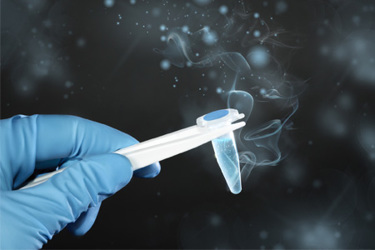ATMP Cryopreservation Done Right - Best Practice In Small Volume Cryo-Freezing

Explore best practices in small-volume cryopreservation for Advanced Therapy Medicinal Products (ATMPs), highlighting critical challenges such as leakage, cell death, and inefficiencies. It emphasizes the importance of maintaining sterility in cryogenic storage to prevent contamination and product loss. Ultra-low temperature storage (-130°C to -190°C) requires robust, chemically compatible single-use bioprocess containers, including aseptic connectors and protective secondary packaging.
Innovative solutions like CPC’s MicroCNX® aseptic connectors and Single Use Support’s RoSS.KSET protective freezing system address these challenges. MicroCNX® connectors enable secure, contamination-free fluid transfers while withstanding cryogenic conditions, reducing sterility risks. RoSS.KSET provides robust secondary packaging to prevent bag breakage, ensuring product integrity during freezing, storage, and transport.
Controlled-rate freezing techniques are essential for maintaining cell viability, with optimal freezing rates between -1°C/min and -4°C/min. Cryoprotective agents like DMSO further safeguard cells but require compatibility with storage materials.
The paper advocates for efficiency improvements, comparing aseptic connectors to traditional tube welding. Using sterile connectors significantly reduces time and operational costs, enhancing productivity. The integration of vendor-agnostic solutions, like MicroCNX® connectors and RoSS.KSET, establishes a scalable, standardized cryopreservation approach.
Ultimately, the white paper underscores the need for optimized, contamination-free freezing processes to support the increasing demand for ATMPs in biopharmaceuticals, ensuring safe and efficient drug development.
Get unlimited access to:
Enter your credentials below to log in. Not yet a member of Bioprocess Online? Subscribe today.
